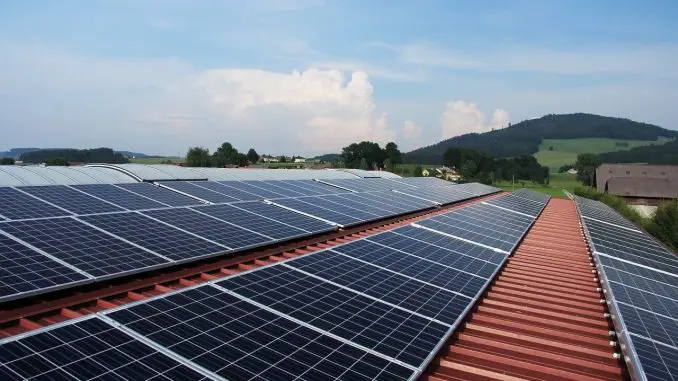
Solar module or solar panel. We have compiled this guide with four specific tips to make it easier to compare solar panels and to set suppliers’ requirements for the purchase.
Usually, solar panels are rectangular with a dimension of approx. 1 x 1.7 meters. They have a power of between 285 and 340 W. (There are also panels that have over 400 W in power, but they have a format of 1 x 2 m.) And the most important substance in the solar cells is generally silicon. So far it is often the same.
However, there are a plethora of brands and it is not quite easy to compare quotes and choose solar panels. These four things we think you should consider when evaluating different options for purchase.
1. Select certified panels
The most common and widely accepted solar panel certifications are from the International Electrotechnical Commission (IEC). The certifications that you should ask for, or look for in the product sheet are called IEC 61215 and IEC 61730. To obtain the certificate, the solar modules are tested by a certification body that verifies that what is specified in the product sheet is correct under test conditions.
They also test how durable they are under extreme climates (which are simulated in a lab environment) and how quickly they degrade.
The certification body should also be included on the solar panels’ product sheets or be digitally identifiable. Some of the most common and trusted certification bodies are German TÜV Rhineland, TÜV Süd, and VDE. If you live in a near sea, it may also be a good idea to look for panels that have been tested for high concentrations of salt and ammonia, which should also be stated in the product sheet.
2. Compare the price per watt
To compare the profitability of different panels, it is important to know how much electricity they will generate in relation to the price. The amount of electricity a photovoltaic panel generates per watt per year is usually not very different between makes, which has led to it being industry-standard to precisely compare photovoltaic price per (kilo) watt.
A common misunderstanding is that the efficiency in itself affects profitability. However, the efficiency is already taken into account when producing the power of the panel and thus determines how many watts you get per panel, not how much electricity you get per watt.
With that said, there can, of course, be cases where you have a small available area and want to pay a little more to make room for high-performance solar modules with high efficiency.
3. Compare product guarantees and performance
It is standard that photovoltaic panels have a product warranty (“Product warranty” or “Materials warranty”), which says that the photovoltaic panels should not break within a certain number of years, usually 10-12 years or longer. (There are also solar panels – so-called glass-glass panels where the solar panel has a glass layer on both sides of the solar cells – which can have product guarantees up to 25-30 years.) The transport of materials is included if something breaks.
As with most solar cells, they degrade and become less efficient over time. Therefore, it is also standard with an additional guarantee that specifies how well you can expect the panel to perform over time – a “power guarantee” (usually called “Performance warranty” in the product sheet).
By default, manufacturers guarantee that the solar panels will generate a certain percentage of power after 25 years – usually no lower than 80%. However, the rate at which degradation occurs may differ from brand to brand. For example, there are solar panels where the manufacturer guarantees over 85% after 30 years, which indicates a more high-quality panel that will generate more electricity during its lifetime.
That being said, most solar panels are very durable, with low maintenance costs and little risk of actually breaking them.
4. Compare the appearance of the solar panels
The two most common solar cell types consist of polycrystalline and monocrystalline silicon, respectively. These make up 95% of the world market.
Polycrystalline solar cells generally have slightly lower efficiency than monocrystalline and are cheaper. However, it is difficult to say anything in general about which photovoltaic technology is the best, or most profitable, choice. (Remember, it depends primarily on the price per watt, as well as the performance!).
However, the choice of solar cell technology will affect the appearance. Polycrystalline solar cells have a dark blue tone while monocrystalline solar cells are black in appearance.
There are also so-called thin-film solar cells, which generally have lower efficiency and cost less compared to crystalline silicon solar cells. Thin-film solar cells are homogeneous in appearance and usually black. A common application for thin-film solar cells is roof or facade integration.
In summary
There are many ways to compare solar panels. These four things we think should be considered above all before a purchase:
There are established certifications of solar panels.
Be sure to choose solar panels with these.
It is standard to compare prices of photovoltaic panels and photovoltaic plants per watt and kilowatts respectively.
Performance and guarantees may differ.
Keep in mind that the choice of photovoltaic technology, such as mono- and polycrystalline photovoltaic cells, affects the appearance of the plant.

Leave a Reply